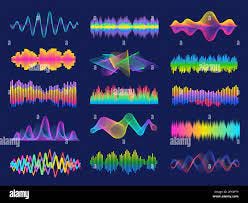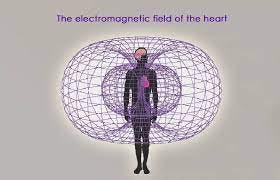In the beginning the Word already existed.
The Word was with God, and the Word was God.
St. John’s Gospel (Word = sound)
Introduction
Creation of the Universe by sound, depicted by ancient traditions, is now being validated by mainstream science and quantum physics. Sound vibration is the source of creation according to Dr. Daniel Epstein, professor of astronomy at the University of Arizona, among many others. Vibration is the foundation of all matter in the Universe.
Scientists are using instruments such as the CymaScope to discern the sound imprints left by the formation of galaxies, stars, planets and life itself. The CymaScope is the first scientific instrument that provides images of sound and vibration. For the last few centuries, science has reigned supreme in understanding our universe, but recently it is merging with spirituality and consciousness. Again, sound vibration is foundational to this knowledge.
This article introduces the physics of sound and how sound and vibration are at the core of spirituality and creation. It briefly describes basic types of energy and forms created by vibration. In-depth scientific descriptions of consciousness and energy healing are beyond the scope of this paper, but are the focal point of considerable modern research and applications.
Sound and Creation
Ancient spiritual traditions from many cultures speak of sound as pre-existing the formation of the universe. Multiple scriptures write of this in India and Egypt. For example, the Shabako Stone, commissioned by the pharaoh Shabako around 705 BCE, is an important Egyptian text and comparable to the Rosetta Stone. Hieroglyphics are translated based on these stones. The Shabako Stone presently resides in the British Museum. Lines 56-57 of the text state:
Lo, every word of God came into being through the thoughts of the mind and the command of the tongue.
The Vedas are the most sacred scriptures of Hinduism, and embody the spirit of Brahman, the Lord and Creator of the Universe. Hymns, mantras and rituals are basic to many of the concepts and beliefs in the four Vedas. The Vedic saying “Nada Brahma” is translated as “All is Sound” or “Sound is God.”
The Word of God can be heard as the sacred mantra OM. The Greek philosopher and mathematician, Pythagoras, believed in a “singing universe” and termed the phrase, ”music of the spheres.” He developed a musical scale of Pythagorean harmonic intervals, each having unique healing and consciousness qualities.
Terminology Used in Cymatics
· Cymatics is the study of sound and vibration using a cymascope. The term cymatics means the study of visible effects of sound and vibration.
· A cymascope is an instrument that measures and visualizes 3D sound on a very thin film of water, creating an analog image.
· Vibration creates sound. Every vibration has a particular frequency.
· Sound is transmitted by vibration at a frequency rate.
· Frequency is the number of vibrations per second called Hertz (Hz).
· The human ear can detect frequencies in the range of 20 to 20,000 Hz.
· Frequencies above 20,000 Hz are called ultrasound and frequencies below 20 Hz are infrasonic.
· Sound vibration can travel in multiple directions, shapes, and patterns and can oscillate and spin at a standstill.
· Complex frequencies produce harmonics and overtones.
· A harmonic frequency is a multiple of a fundamental frequency. One fundamental note in music produces all the others above it. A musical instrument produces both fundamental tones and overtones.
· Coherent frequencies are ordered, consistent, clear and in phase. A tuning fork produces a coherent frequency, which is why it is used as a healing tool.
· The power of coherence, for example in music, balances the body. Noise has a chaotic frequency pattern and is stressful to the body.
The Physics of Sound
Everything in the universe vibrates, down to the smallest quantum bits, such as photons of light and subatomic quarks. The building blocks of matter, whether gas, liquid, solid or plasma, consist of vibrating atoms and molecules. Every element has a specific vibration and frequency.
Space is a medium, filled with non-physical waves and quantum bits. Space is not empty. An atom is 99.9999% space. The electrons surrounding an atom are non-physical waves until observed, when they become particles, according to the Double Slit experiments with the Copenhagen Interpretation of quantum physics.
As sound travels through a medium away from its source, it collides with the physical and non-physical particles and waves in the medium. As one particle becomes disturbed, it exerts a force on adjacent particles, creating a disturbance that is passed from particle to particle through the medium.
Sound does not travel as the 2D longitudinal or transverse waves as diagrammed in text books. Rather, sonic energy typically expands away from its source and atomic collisions as 3D emanations. Human vocalizations are spherical or bubble-shaped according to research at Cymatics Research and Global Sound Healing Institute.
The bubble sphere expands and contracts in oscillation. When sound propagates through air, every particle lying in the path is involved in the process of passing on the sound data that originated from the sound source. Theoretically, every atomic particle in the sonic bubble contains the data of the sound source. Below are samples of sound waves.
The Speed of Sound
The speed of a wave is defined as the distance that a point on a wave travels per unit of time, where speed = distance/time in equation form. This is distinguished from frequency, which refers to the number of vibrations of a particle or wave, per unit of time. The speed of sound varies, depending on the medium through which it propagates.
There are two essential types of properties that affect wave speed: Elastic properties and inertial properties. Elastic properties refer to the tendency of a material to maintain its shape and not deform whenever a force or stress is applied to it. Steel is an example of a rigid material with high elasticity. A rubber band has high flexibility and changes its shape readily, so has low elasticity. In general, solids have the strongest interactions between particles and elasticity factor. For this reason, sound waves travel faster in solids than they do in liquids, followed by gases.
The density of a medium is an example of its inertial property. The greater the inertia (mass density) of individual particles in a medium, the slower the wave will travel. However, within a single phase of matter, such as Helium, the inertial property has a greater impact upon the speed of sound and will travel faster in a less dense material. Therefore, a sound wave will travel nearly three times faster in Helium than it will in air.
The speed of a sound wave in air depends on the properties of air, mostly temperature, and to a lesser degree, the humidity. Particles of water affect the mass density of air (an inertial property). The temperature affects the strength of the particle interactions (an elastic property). The speed of sound in air on a standard day at 68° F at sea level in static conditions is about 761 mph.
Cymatics
Dr. Hans Jenny, a Swiss medical doctor, was a pioneer in the field of cymatics. In the 1970’s, he demonstrated that sound at different single frequencies create beautiful geometric patterns, made of powder or droplets of water on a metal plate. Some of the patterns resembled living organisms, such as a leaf or a sand dollar. As soon as the sound was turned off, the water droplet returned to a simple circular shape. Jenny speculated that sound and vibration contribute to the patterns in nature. This underlies the notion that sound underlies all of creation and why the practice of mantras is so powerful.
In general, single frequency sounds create simple imagery and complex harmonic sounds, such as music, create complex imagery. A variety of cymatic videos can be seen on You Tube. Here is a link to one such video of shapes at different frequencies.
Here is a link to an audio and visual cymatic sample of a human voice at different pitches.
Light and Vibration
Every sound frequency has a color and a shape connected to a light frequency. Light forms matter as the vibration slows down.
When collisions occur between atoms or molecules, there is a release of electromagnetic energy, generally classified as photons or as light. Light created by atomic collisions in which the energy is slow, creates infrared light. Light created by atomic collisions in high energy states results in X-rays and gamma-rays. Multiple collisions result in spherical propagation of electromagnetism.
The Golden Mean Ratio and Fibonacci Sequence
Using a cymascope to study the visual geometry of sounds, many sounds are found to include the mathematical constant of Phi, approximately 1.618. Phi is also known as the Golden Mean. The ratio of approximately 1 to 1.618 is found in all living things, demonstrating the connection between sound and life. Even pure sounds that do not contain complex harmonics are mathematically embedded with the Phi ratio.
The Phi spiral and corresponding Golden Mean Rectangle are proportions that are repeated as fractal patterns throughout nature. Cross section examination of DNA strands reveals repeating fractals. The angles in a star fish have a phi ratio and the 5 points fit into a pentagonal shape. Mathematically they are based on the Fibonacci Sequence. See images below.
Leonardo Pisano Bigollo, Italian mathematician in the 13th century, described the Fibonacci Sequence (FS) of harmonic numbers. In the FS progression, each number is the sum of its previous two numbers, beginning with zero. Every fifth number is divisible by five. The ratio of each successive pair of numbers approximates Phi, 1.618. For example, 5 divided by 3 is 1.666.
Fibonacci Sequence and Golden Ratio in Art
FS and the Golden Ration have been used by architects, artists and musicians to structure their artistic creations. The Great Pyramid of Giza was constructed using these numbers, for example, in the ratio of its length and height. Leonardo Da Vinci featured the Golden Ratio in defining the dimensions of the table in his famous The Last Supper painting.
In music, the FS is found in many compositions and plays a big role in Western music. Mozart based many of his piano sonatas the Golden Ratio. The octave on a piano consists of eight white keys and 5 black keys. The dominant note is the fifth note, which is the eighth note of the 13 keys composing an octave. Eight divided by 13 equals 0.61538 and 13 divided by 8 equals 1.625. These are Fibonacci numbers.
Sacred Geometry
Every geometrical shape corresponds to a sound mathematically and many believe that the information embedded in the sound creates the shapes.
Geometrical archetypes referred to as sacred are symbolic of underlying metaphysical principles of unity and our connection to the whole. They provide a blueprint for creation of all things and are considered part of the actual structure of the entire universe. This is an image of the well-known Flower of Life symbol, linked to Chakras.
The Platonic Solids are thought of as the building blocks of the Universe, taught in the Greek Mystery Schools 2,500 years ago. These five fundamental solids are the tetrahedron, hexahedron (cube), octahedron, icosahedron, and dodecahedron. The triangle is the symbol that underlies all of them. The triangle symbolizes balance, harmony, and completion. Protons are at the corners of each shape, called node points and a standing wave pattern holds the nodes apart.
A frequency resonance is what pulls the atoms together into a geometrical shape.
Plato described these forms as the only ones that fit perfectly within a sphere and are linked to the archetypal elements of fire, earth, air, water and ether. Aether is the space that contains the elements, which are mixed to create different types of space.
Scalar Energy
The original discovery of scalar energy dates back to James Maxwell in the 19th century, who developed quantum physics theory. It was later expanded by Albert Einstein and Nickolas Tesla. Tesla demonstrated scalar energy existence, which he described as standing energy, universal waves and radiant energy. Tesla found many beneficial uses for the energy, including radio transmissions, free energy, intuitive expansion and energy medicine.
Scalar energy is the result of two frequencies, identical in makeup, that interact from opposite directions and collide. This cancels out any free movement with equal energy in opposite directions, creating a stationary energy field. This energy field is static and subsequently referred to as zero point and standing waves. Scalar energy consists of spheres of energy that radiate outwards in a balanced network.
Toroidal Fields
Sound creates moving magnetic fields; magnetic fields create torus fields. A torus field consists of a central axis with a vortex at both ends and a surrounding coherent field. Energy flows into one vortex, through the central axis, and then wraps around itself to return to the first incoming vortex.
The simplest description of a torus field form is that of a doughnut, although it takes many dynamic forms, depending upon the medium in which it exists. The torus is a process that enables a seamless fractal embedding of energy flow from the micro- atomic size to macro-galaxy size. At the center, the system comes to a point of balance and stillness, called the zero-point in the underlying Unified Field.
Hurricanes, magnetic fields around planets and stars and whole galaxies are toroidal energy systems. For example, our Sun has a large toroidal field surrounding it, called the heliosphere. Earth’s atmosphere and ocean systems are toroidal. Plants and humans display the same energy flow process.
According to the Institute of Heart Math at Stanford University, the energy field of the heart extends at least ten feet out from the body and is five thousand times stronger than that of the brain. The electromagnetic field of the heart is sixty times the strength of the brain’s EMF. Therefore, connecting to our heart center allows us unlimited access to insight, inspiration, intuition, and creativity.
The Human Body Decodes Vibrations
Our brain and sensory organs detect the vibrations and convert them into meaning. Living beings continually transmit and receive information from vocalizations that resonates with other vibrational beings, events, and experiences. Our bodies are transducers that senses and changes energy from one form to another.
Hearing is our most sensitive sense, and the last to go before death. The human voice is an example of a complex sound. Music, with coherent harmonics, has a unique capacity to bring us back into balance of body and soul.
Dr. Masaru Emoto experimented with putting thoughts and emotions into water. Our bodies are 65-70% water by volume and 99% water by number of molecules. His studies showed our thoughts and feelings INFORM the water in our cells. Any voice we produce, especially repeated mantras, reverberates through us, affecting all the structures in our bodies
Nassim Haramein explains that the body functions like an antenna, interacting with the informational energy field. Water is the key to transmission of data. Water surrounds the DNA.
Luc Montengier studied EM signals in water and how it interacted with human DNA. He concluded that information stored in structured water of our cells informs our DNA.
References
Beaulieu, John. Human Tuning. BioSonic Enterprises, High Fall, NY 2010.
Ponton, Jude DC and Paul Ponton, LAC. Connecting With Our Heart Field. , June 1, 2017. www.acutonics.com
Cosmometry. The Torus – Dynamic Flow Process. Cymatics Research. www.cymascope.com, www.cosmometry.net.
McKusick, Eileen Day. Tuning the Human Biofield. Healing Arts Press, Rochester, VT 2014.
Globe Sound Healing Institute. www sound healing center, www. Complete guide to soundhealing.com, www.sound healing research foundation.org.
Nassim Haramein. www.theresonanceproject.org
Rizzi,Sofia. What is the Fibonacci Sequence – and why is it the secret to musical greatness?
Rory PQ. Music and the Fibonacci Sequence. Http://blog.dubspot.com/fibonacci-sequence-in-music, www.classicfm.com
The Science Behind Scalar Energy. Https://www.miraclebalance.net
The Physics Classroom. Physics Tutorial: The Speed of Sound. www.physicsclassrom.com.
Tellinger, Michael. Sound Physics at Globe Sound Healing Conference and Lecture Series on YouTube.com










